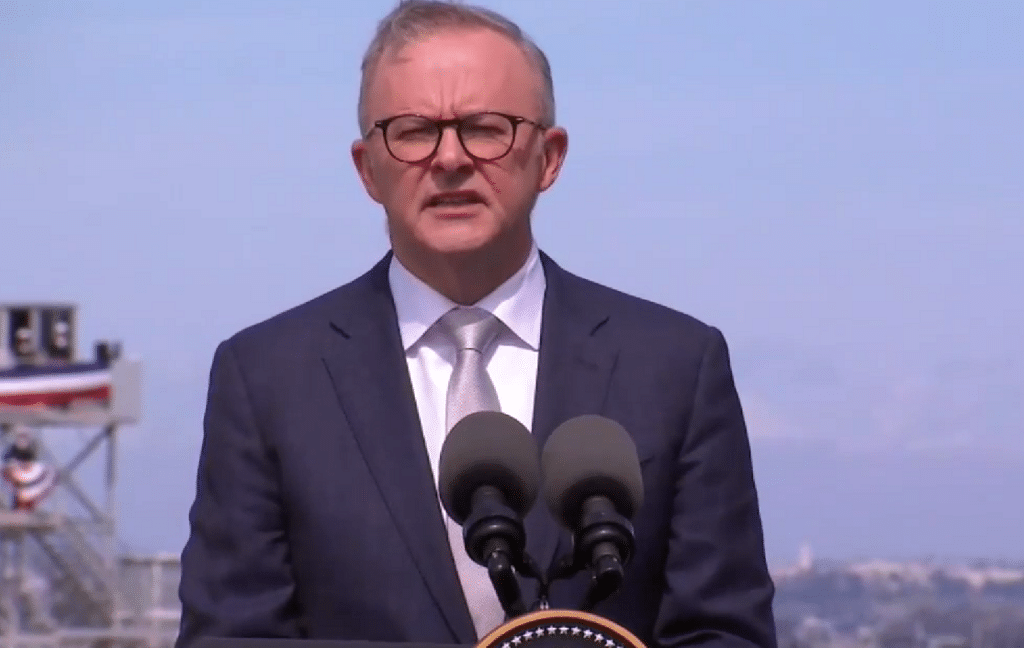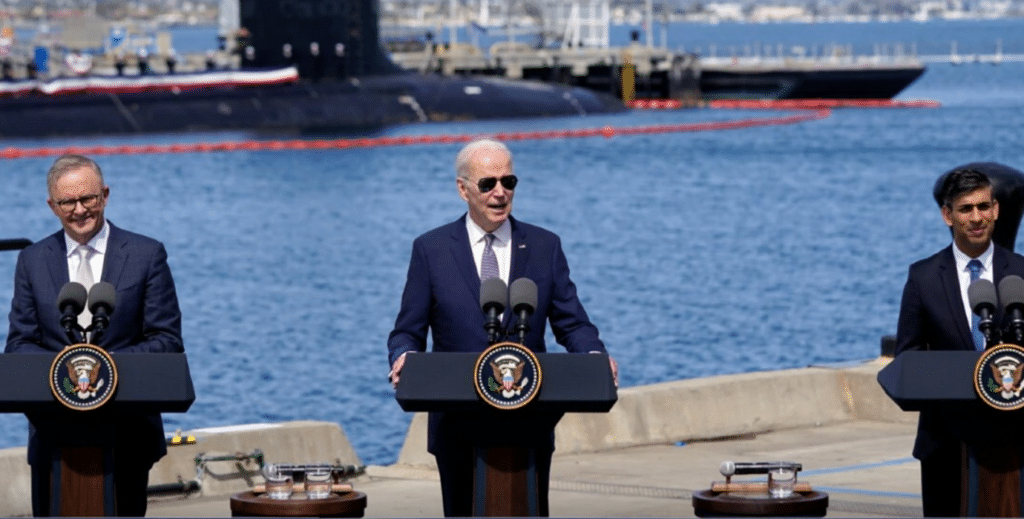Prime Minister Anthony Albanese joined US President Joe Biden and UK Prime Minister Rishi Sunak on Tuesday (AEST) to announce the single biggest investment in Australia’s defence sector, known as the AUKUS pathway.
Australia will build a new fleet of eight nuclear-powered submarines as part of a massive new defence program that is projected to cost between $268 billion and $368 billion over the next three decades.
Australia will buy three of the US’ existing Virginia-class submarines from the early 2030s and plans to build a new class of submarines, called the SSN-AUKUS, in Adelaide later this decade, delivering 5 of these by 2055. By the mid-2060s, Australia plans to have built 8 of these submarines. The submarines will be based on UK design, and incorporate US technologies.
The UK will deliver its first SSN-AUKUS submarine in the late 2030s, with the first SSN-AUKUS submarine built in Australia expected to be delivered in the early 2040s.
Albanese also announced that the naval base HMAS Stirling in Western Australia will receive an $8 billion upgrade, with four US submarines and one UK submarine to start rotating through Western Australia from as early as 2027. Australia will also contribute $3 billion over the next four years to US and UK production lines.
“The AUKUS agreement we confirm here in San Diego represents the biggest single investment in our defence capability in our history,” Albanese said when announcing the deal alongside Biden and Sunak.
The AUKUS deal ties Australia inextricably with the United States and the United Kingdom for the next three decades, but Albanese has promised Australia will maintain its sovereign submarine and defence capability.

Australia will not build nuclear reactors for the submarines. Instead these will arrive for all vessels from the US or UK welded shut and will not require refueling over their lifetime. Australia has also committed to managing all radioactive waste on Australian soil.
Speaking on Tuesday, Defence Minister Richard Marles reaffirmed that amid the production of the nuclear submarines, Australia will meet its obligations under the treaty of Rarotonga, the South Pacific nuclear free zone treaty.
“A pre-condition of the whole program with AUKUS is to be making sure that everything we are doing is compliant with Non-Proliferation Treaty obligations and we are really confident that we are setting the highest bar in relation to our NPT obligations and we’ve been working closely with the International Atomic Energy Agency in respect of this,” Marles said.
Who will build the submarines?
The Australian government says 20,000 jobs will be created in Australia as a result of the AUKUS submarine deal, with the majority of jobs to be in South Australia and Western Australia.
Marles said it will create a “sovereign Australian workforce” to build the submarines, although it has not outlined specifically where these Australian workers will come from.
“We’re going to train Australians to do this,” Marles said on Tuesday. “As I said, apprentices starting their training today could work on this project for their entire working life. We’re going to be training Australians to do this and we’re confident that we’re investing now to deliver that.”
“We’ve talked about there might need to be some discussions around visa arrangements to facilitate workers from Australia working on US and UK submarines and vice versa.”


